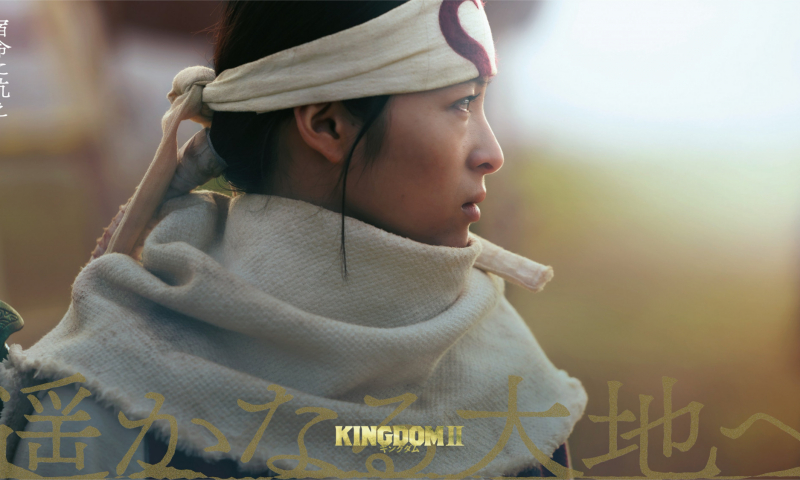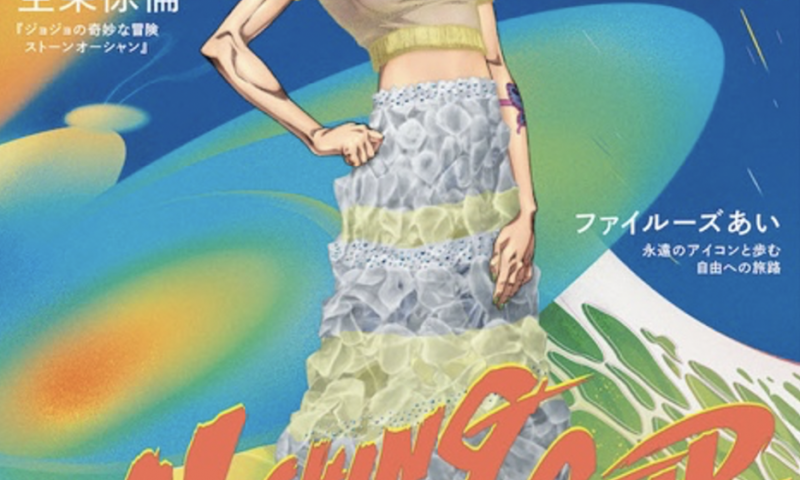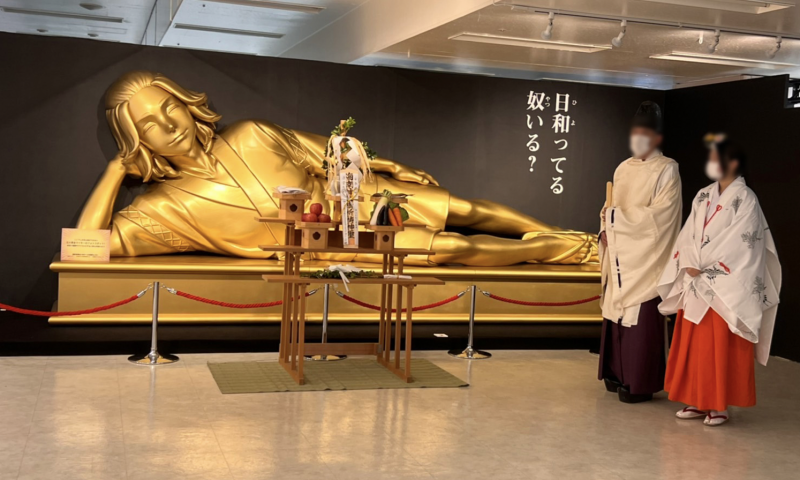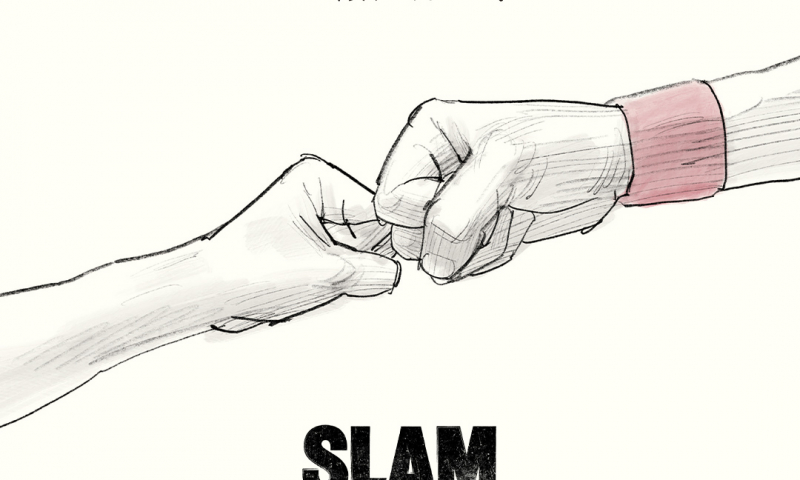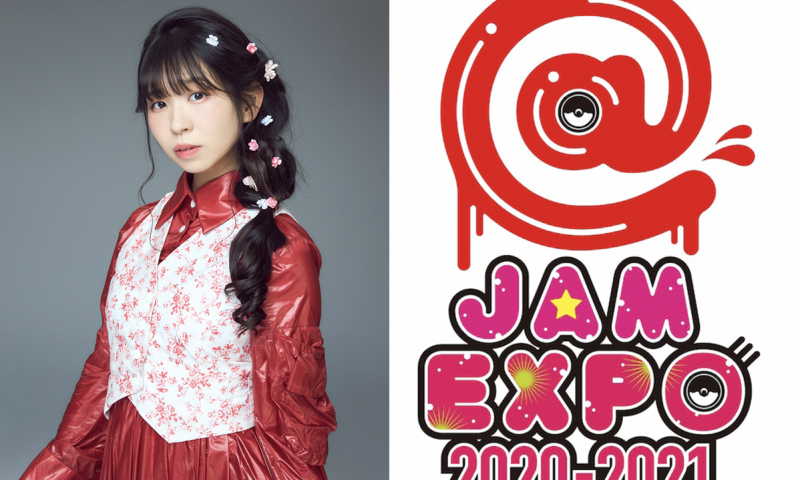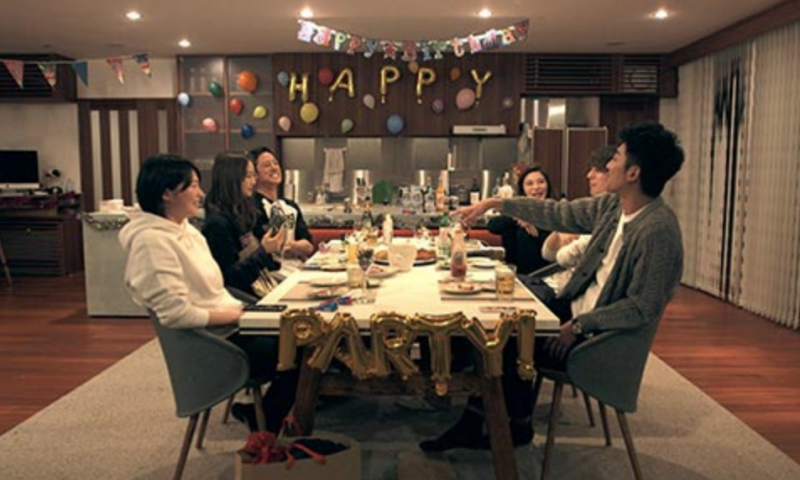
Japanese Boys & Girls Reality Show “TERRACE HOUSE” Never Ends : Unraveling the Popularity & Comparing with the Ones in Other Country
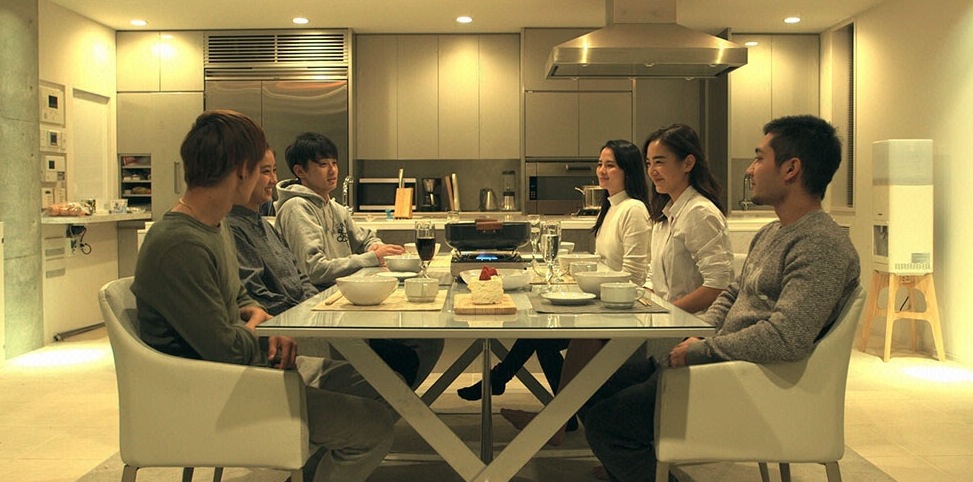
Sponsored Links
We can’t really deny that most of us like to take a peek in to other people’s business, especially when it comes to gossipy ones. And reality shows somehow allows us to do that, to take a look in to other people’s lives as an entertainment.
In the case of Japan, the reality shows are not really so popular to the broad demographics, but it always has the stable popularity amongst the teenage population. In the past, “Ainori (あいのり)” was one of the most popular shows to the teenagers when they were aired from 1999 to 2009, where four Japanese men and three women would travel the world together in the same wagon to find true love.

Ainori (Aired from 1999 to 2009 on Fuji Television)
If one of the member decides to confess their feelings to another, if s/he would say “yes,” then the happy couple will go back to Japan, but if the answer is “no,” then the confessor would have to go back to Japan by him/herself. “Ainori” was one of the popular show back then, where teenagers would bring in to the topic next day in school.
At the same time slot of “Ainori,” the new style of reality show, “TERRACE HOUSE – BOYS×GIRLS NEXT DOOR” became a sensation to the young teenagers in Japan. The Fuji television series were on-air from 2012 to 2014, and the movie, “TERRACE HOUSE Closing Door” also became a hit. The show has rebooted with the new title and new residents, “TERRACE HOUSE – BOYS&GIRLS IN THE CITY,” and still running on to it’s second season on Netflix.
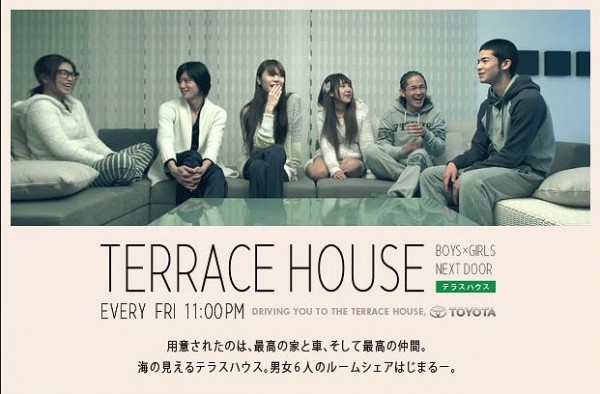
TERRACE HOUSE BOYS×GIRLS NEXT DOOR (Aired 2012 to 2014 on Fuji Television)
Unlike “Ainori,” TERRACE HOUSE has a simpler rule, “Three men and three women live under the same roof, recorded with no script, and only thing provided are fancy house and two cars.” The rule doesn’t require to find a partner but just to live with the other residents who are in the similar age range. As long as the resident would report when and why s/he would leave the house, then the new member will come in to fill in, so the cycle of share-housing will never end. Some stay longer, some stay in short time period. Some stay although they became a couple, some leave because of they just couldn’t fit in. Different kinds of people come to TERRACE HOUSE for so many reasons, and leave TERRACE HOUSE for so many reasons as well. This kind of patterns of human relationships is very much revealed in the show and that is what may be making it so popular in Japan.
1. Then, what makes TERRACE HOUSE so different from other Reality Shows?
It has been said that the TERRACE HOUSE was inspired by the reality show in the United States called, “The Hills” aired from 2006 to 2010 on MTV. The basic format of the TERRACE HOUSE has so many commonality with “The Hills,” like the fonts of the captions, camera works and the editing. Also, the very fancy house and the car setting is also the similar aspect to it.
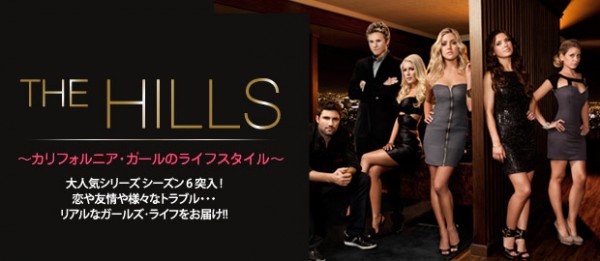
“The Hills” on MTV (2006 to 2010)
Another comparative reality show that is made with will be the “Jersey Shore” which was also aired on MTV from 2009 to 2012. The viewers would expect some dramas from the three men and three women living under one roof situation, and “Jersey Shore” pretty much meets with that expectations from the viewers with the scandalous and radical lifestyles of young Guidos and Guidettes.

“Jersey Shore” on MTV (2009 to 2012)
Although there are similarities to these American reality television shows, but in the case of TERRACE HOUSE, there are some differences, and yet, it’s a reality show that is closer to the reality that people can watch than of American ones. The conflict and the tension is there in the TERRACE HOUSE like any other reality show would have, how it is handled is because of the show’s “open-ness” and “balance.”
American media studies scholar and the fan of TERRACE HOUSE, Miranda, tells me about the main difference between American reality TV shows and TERRACE HOUSE is the level of “open-ness” to the viewers/audiences are different. In the case of TERRACE HOUSE, the reaction panel which consists of famous TV personalities and comedians watching and reacting to what happened at TERRACE HOUSE, plays a very important role to the show itself. Miranda mentions, “In a way, the panel shows the audience how to watch the ‘reality’ – pointing out multiple views and interpretation of everything. I think this is actually more effective than American style shows, like the Jersey Shore, where the narrative is played out with the personal confession.”
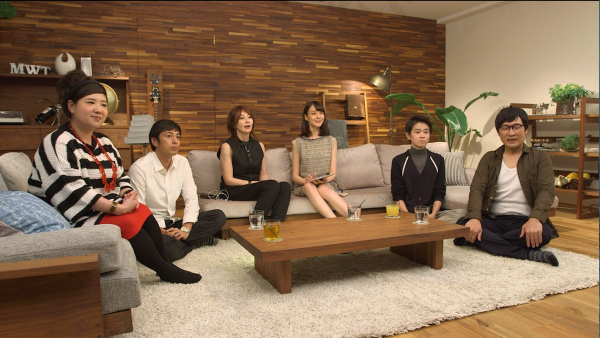
TERRACE HOUSE Studio Reaction Panel Members
Yama-channel – extra youtube clip of one of the personnel in the reaction panel for “TERRACE HOUSE – BOYS AND GIRLS IN THE CITY.”
In the American reality shows, it is common for the casts to have a personal panel to talk about their personal opinions and legitimize the situation from the casts’ personal perspective. But in the case of TERRACE HOUSE, when there is a specific goor or bad situation happening to the residents, it is really not the cast members to legitimize themselves, but rather leaves open discussion for the reaction panels, where the non-resident TV personalities and comedians are there to talk about what just happened in the studio. And when the viewers would watch both, the TERRACE HOUSE situation and the reaction panels’ reactions to the situation, the combination of the two aspects shapes in many ways of how the viewers watch the show.
Also, the “scripted” or not sort of issue, or “yarase” in Japanese, is always the debate when it comes to any kind of reality show. This issue can cause more drama, which leads to more entertainment, but the “yarase” scandal can lead it to shut down of the show. The past TERRACE HOUSE series was also pressured to shut down the program when the tabloid has revealed about the backstage of TERRACE HOUSE. Miranda also tells me, in relation to the “open-ness” of the show, the balance of “scripted” and “reality” issue with TERRACE HOUSE as, “Of course, the producers shape the narrative by selecting the footage we see. But it seems far more hands-off than some American shows where producers will deliberately cause issues in order to provoke reactions from the house guests.” We are not all naïve to believe that all reality shows are truly unscripted, and although TERRACE HOUSE tells us that the show doesn’t have any script, we can always be doubtful whether or not, the residents play out their part in the script. But, TERRACE HOUSE doesn’t really show the deliberate-ness of the narrative of the show, that allows the studio reaction panel and the viewers to have the freedom to interpret about the situation and the residents. Therefore, as Miranda also describes, TERRACE HOUSE is “leaned towards unscripted” and closer to the basic concept of what “reality show” should be like.
2. Past TERRACE HOUSE Residents And Now
Many of the residents from TERRACE HOUSE have become a popular model, gravure model, singer, idol, actor, designer, office worker etc. even after their stay. The graduated members went on their different ways to further seek their careers and future.
The singer-song writer, chay, was also TERRACE HOUSE resident from 2013 and graduated in the March of 2014. She has been releasing songs for television commercials, animation songs, and drama series, and also working as model in the magazine “CanCam” as well.

chay
Miwako Kakei, is also one of the successful graduated member from TERRACE HOUSE, now working as a gravure model. (Know more about “gravure idols” from this article: http://tokyogirlsupdate.com/gravure-idols-part1-20151063255.html) She is now on the cover of the magazines, and also worked with one of the most famous Japanese photographer, Kishin Shinoyama, for her photobook as well. Not only Miwako Kakei has popularity amongst male fans, but she is also working as a model for the magazine, “JJ” and walking on runways in fashion shows, that she also has female fan base as well.
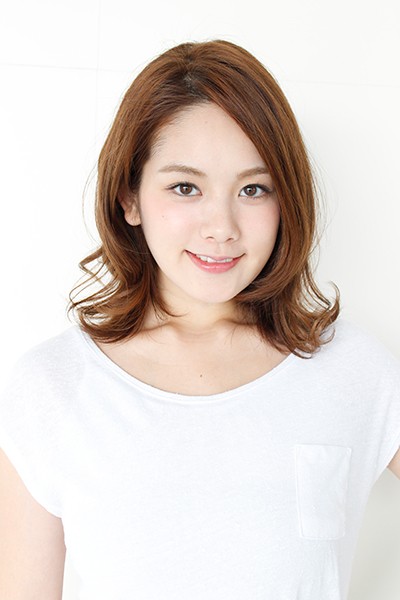
Miwako Kakei
Another past TERRACE HOUSE participant was Rie Kitahara, AKB48 member and current captain of NGT48. An idol, where the idol is prohibited to interact with men, raised the issue by officially as “an idol to share house with men” on TERRACE HOUSE.
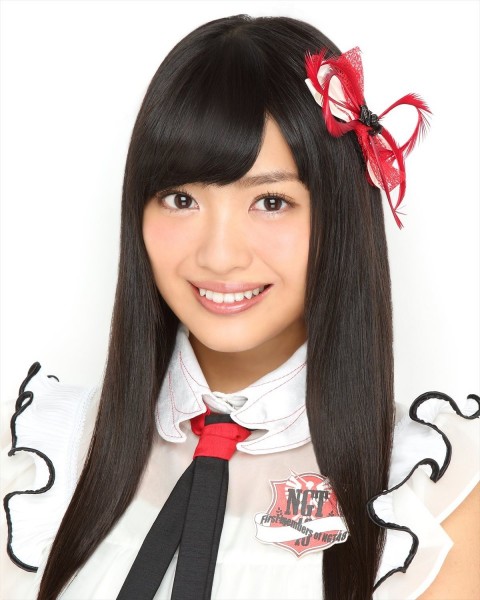
Rie Kitahara
On the first day when she joined TERRACE HOUSE, she was obviously asked by the participants, “What if you fall in love with someone here?” She answered, “I don’t know, but since it is not good for AKB, I would have to leave the group…But I came here to participate full throttle, not leave it unfinished.” The debate whether an active idol is allowed to be put in a scandalous situation was there. And throughout her stay at TERRACE HOUSE, Rie Kitahara did go on a date with one of the members, and was on the track to holding hands, but she has refused the request since it went against the rule of what idols supposed to be. (Review what idol’s rule against love by Okkun: http://tokyogirlsupdate.com/rule-against-love-part-2-20160382722.html )
Like these ex-residents from the previous TV series of TERRACE HOUSE, the other ex-residents have moved on for their future success. For the on-going series on Netflix, “TERRACE HOUSE – BOYS AND GIRLS IN THE CITY,” who knows, there might be new television star to be born from the series as well.
3. TERRACE HOUSE popularity
The Japanese teenagers and young adults were obsessed with TERRACE HOUSE and the movie itself became a hit as well. “Six young adults living under one roof in a fancy house” situation would be what many of the young people would dream about, and that could be the main factor of the popularity. This is a typical “shojo manga (girls’ comic)” situation, where a teenage girl and boy live together (or neighbor
) without knowing each other at first and become closer they spend more time together at home.
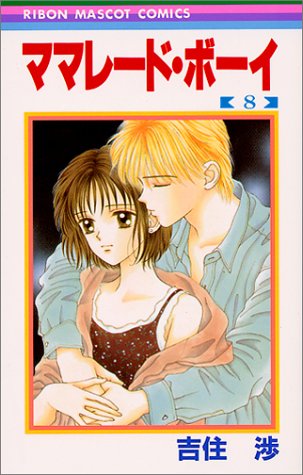
Marmalade Boy
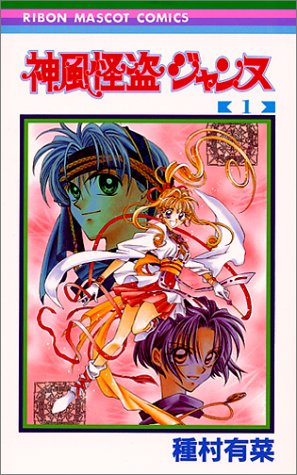
Kamikaze Kaitou Jeanne
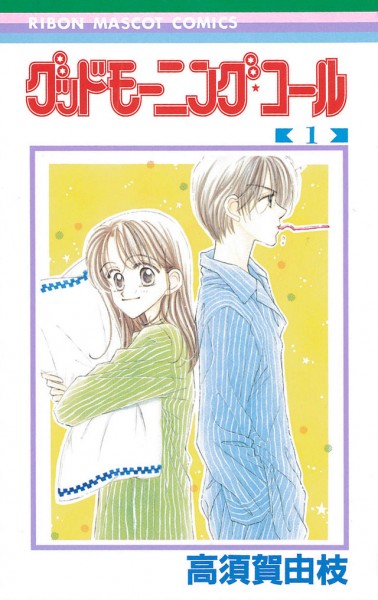
Good Morning Call
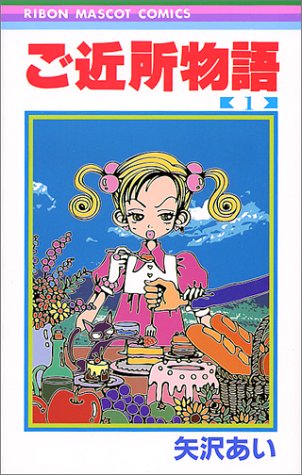
Gokinjo Monogatari
This kind of closeness of the residents in the TERRACE HOUSE is like “shojo manga’s” closeness of the characters, that may (or may not) develop in to some special feeling towards each other that many of the young females would dream of.
That “shojo manga”-like situation is played in a “oshare” or stylish way. In the previous section, TERRACE HOUSE is said to be inspired by the American reality show, “The Hills,” so that glamour Western style is shaped in to Japanese setting, and the result is TERRACE HOUSE. This gives that “unrealistic reality” of that fanciness of the residents’ lifestyles, which every young people dream of, but somehow “reachable” dream that may come true to the viewers. And along with that Western, glamour lifestyle, the music tracks that are used in the show are often the “yogaku” or Western pop-music, to enrich that stylish-ness of TERRACE HOUSE. Taylor Swift’s 2012 hit single, “We Are Never Ever Getting Back Together” was the opening song for the first TERRACE HOUSE series, and regardless of the meaning of the song, the song became popular as “TERRACE HOUSE’s oshare opening song.”
Taylor Swift – We Are Never Ever Getting Back Together (Opening song for TERRACE HOUSE – BOYS×GIRLS NEXT DOOR)
The omnibus soundtrack of previous TERRACE HOUSE, “TERRACE HOUSE TUNES” has become a hit as well, including names like Weezer, The Black Eyed Peas, and TAHITI 80. Specifically, not all the tracks consists of Western artists and bands; the Hiatus and Q;indivi are the two Japanese names that are included in the soundtrack. And these are the two tracks that actually don’t really sound as typical “hogaku (Japanese pop music)” would be like, which goes well with the atmosphere of TERRACE HOUSE. The soundtrack became a gateway for the young viewers to get in touch with “yogaku” which used to be difficult because of the language barrier. But since the “yogaku” is one of the aspect to the “oshare”-ness of the show, the viewers got closer to the TERRACE HOUSE by listening to these tracks.
Snow Patrol – Chasing Cars (Closing song for “TERRACE HOUSE – BOYS×GIRLS NEXT DOOR” and “TERRACE HOUSE – BOYS AND GIRLS IN THE CITY”)
Although, there are backlashes towards these reality shows as being a “fake,” TERRACE HOUSE series seems as though it has become the possible, closest example to the basic concept of “reality show,” which the supply and demand meets for the viewers and to the residents. TERRACE HOUSE series is still popular because of that realistic imaginary that could be reached from the viewers. And that may be the reason why there’s endless residents in the TERRACE HOUSE, searching for new possibilities of their encounter and future.
Sponsored Links
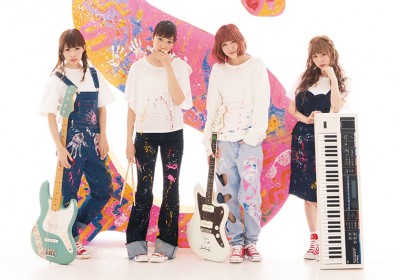
Silent Siren Participates at J-POP SUMMIT 2016 and Will Perform at the Main Stage!

8th Wave of Tokyo Idol Festival 2016 Performers Announced!!


